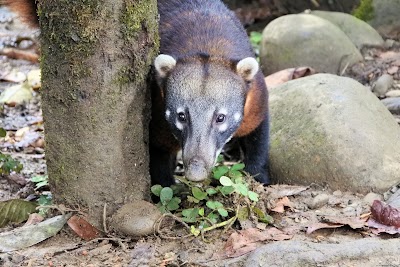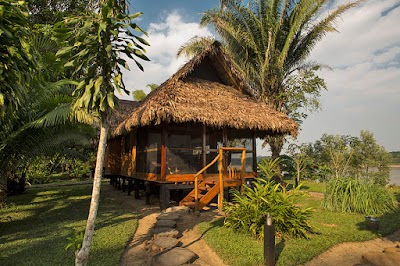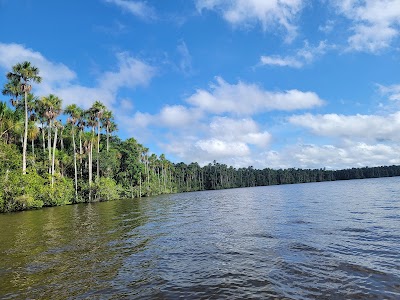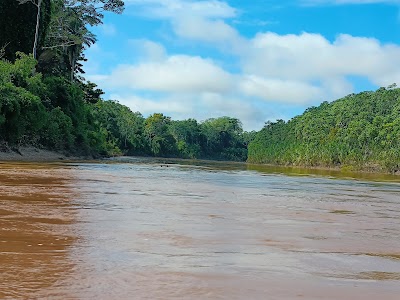Refugio de Vida Silvestre de Tambopata (Refugio de Vida Silvestre de Tambopata)
Overview
Located in the heart of the Peruvian Amazon, the **Refugio de Vida Silvestre de Tambopata** in Madre de Dios is a sanctuary of unparalleled natural beauty and biodiversity. This protected area spans approximately 274,690 hectares, making it a haven for countless species of flora and fauna, many of which are rare or endangered. As part of the larger **Tambopata National Reserve**, Tambopata holds a crucial role in global conservation efforts, emphasizing the importance of preserving our planet's rich ecosystems.
The history of the **Refugio de Vida Silvestre de Tambopata** is closely linked to the broader narrative of Amazonian protection efforts. In the late 20th century, growing awareness of the Amazon's ecological significance led to the establishment of various protected areas. Officially designated as a wildlife refuge in 2000, Tambopata was created to safeguard its rich biodiversity and promote sustainable tourism practices.
One of the most remarkable features of Tambopata is its staggering biodiversity. It is estimated that this region alone is home to over **1,300 bird species, 200 mammal species,** and **90 amphibian species**. Among the extraordinary wildlife, visitors may encounter majestic harpy eagles, vibrant macaws, elusive jaguars, and playful giant river otters. The rainforest ecosystem here is incredibly intricate, with each species playing a vital role in maintaining the balance of this vibrant environment.
A captivating aspect of the Tambopata region is the **Tambopata River**, which flows through the refuge and provides life-sustaining water to the forest's inhabitants. This river serves as a focal point for many eco-tourism activities, including boat tours that immerse travelers into the heart of the Amazon. As you glide along the water, the lush, green walls of the rainforest rise on either side, filled with the sounds of exotic birds and hidden creatures.
A must-visit site within Tambopata is the **Colorado Macaw Clay Lick**. This natural wonder attracts large flocks of brightly colored macaws and other parrots that gather to feast on the mineral-rich clay. Witnessing these vibrant birds congregate in such numbers is both mesmerizing and a vivid demonstration of nature's splendor. For the best experience, visit the clay lick early in the morning or late in the afternoon when the birds are most active.
For those interested in flora, Tambopata offers a dazzling array of plant species. Towering trees, intricate vines, and a profusion of colorful flowers create a dense, multi-layered tapestry of green. Many plants in this region are utilized by indigenous peoples for medicinal purposes, providing fascinating insights into how humans can coexist harmoniously with nature. Guided tours often include detailed explanations of local plant life and their various uses.
Tambopata is not solely about its natural wonders; it also honors the cultural heritage of the area. Indigenous communities, such as the **Ese'eja**, have inhabited this land for generations and possess a profound understanding of the rainforest and its resources. Many eco-tourism lodges partner with these communities, offering tourists an authentic and respectful way to experience the Amazon. Interacting with locals about their traditions and sustainable living practices adds another enriching layer to your visit.
When planning a trip to the **Refugio de Vida Silvestre de Tambopata**, be prepared for a genuine wilderness experience. The climate is typically hot and humid, and while wildlife sightings are frequent, they are never guaranteed due to the unpredictable nature of the rainforest. This unpredictability enhances the excitement of your adventure. Knowledgeable guides are available to lead you through jungle trails, navigate riverways, and take you to hidden observation points.
In conclusion, the **Refugio de Vida Silvestre de Tambopata** in Madre de Dios encapsulates the essence of the Amazon. Its lush landscapes, diverse wildlife, and deep cultural roots make it a must-visit destination for anyone passionate about nature and conservation. Whether you are a seasoned eco-tourist or visiting for the first time, Tambopata promises an unforgettable journey into one of the world's most precious and vibrant ecosystems.






